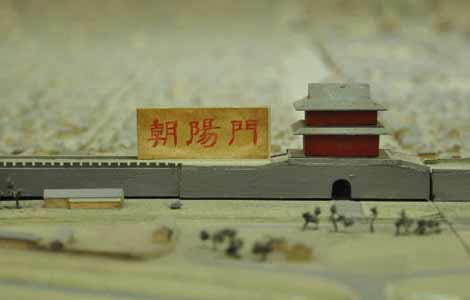Economic slowdown raises top corporates' credit risk
Updated: 2013-08-21 08:04
By Wei Tian (China Daily)
|
|||||||||||
China's economic slowdown is likely to contribute to weakening credit profiles for many of the country's major companies, according to an annual survey of the nation's top corporate issuers by Standard & Poor's Ratings Services.
S&P said that the top companies' balance-sheet leverage and profitability have deteriorated since 2008, as China's easy credit fueled an investment boom amid overcapacity in many industries.
"We believe the financial strength of the majority of corporates in our survey will weaken further in the next 12 months," said S&P credit analyst Christopher Lee.
The report - China Credit Spotlight: High Leverage And Slowing Growth Increase Top Corporates' Credit Risk - examines the credit profiles of 151 major companies.
They were chosen from a pool of the largest domestic bond issuers and biggest revenue-earners, as well as companies that are representative of their industries.
Three quarters of this year's sample comprises State-owned enterprises, a decline from 88 percent in 2012 because of an increase in the number of private companies in the sample.
"A sizeable minority with highly leveraged balance sheets and continued high investment appetites remain particularly vulnerable in the current slowdown," Lee said.
According to China Chengxin International Credit Rating Co, an affiliate of Moody's Investors Service, 52 Chinese companies were downgraded in the first seven months of this year, more than the cumulative volume over the past seven years.
The agency modified the ratings of 37 bonds over the same period, including 22 corporate bonds and five city investment bonds issued by local government financing vehicles.
"The downgrades of city investment bonds were closely related to the weakening fiscal status of local governments and less policy support," said Li Shi, author of the report.
Most of the credit cuts were from AA to AA-, but no triple-A companies were downgraded, Li said.
Most downgrades involved issuers in Jiangsu, Beijing and Guangdong. These regions are also where most of the bonds were issued, according to the China Chengxin report.
The impact of the slowdown is likely to be uneven among industries, S&P said.
"While we ranked telecommunications and oil and gas as the two strongest sectors in the survey, the building materials, coal, construction and engineering, diversified, metal and mining (including steel), transportation, and utilities sectors are the weakest," it added.
Manufacturers of solar and wind power equipment were exposed to higher risks, China Chengxin said.
"Some of these sectors are struggling with excess capacity and depressed profitability," Lee said.
The S&P report also analyzes the impact of downside economic scenarios on 17 industry sectors.
It notes that in a downside scenario of 6.8 percent real GDP growth in 2013 and 2014, which S&P assigns a 20 percent to 25 percent chance to, companies in some sectors could see downgrades of one or two rating notches.
In its base-case scenario, S&P estimates real GDP growth of 7.3 percent in 2013 and 2014.
Wang Tao, chief economist in China with UBS AG, said a faster-than-expected credit growth in July, nearly 700 billion yuan ($114.3 billion) nationwide, was partly a measure by regulators to compensate for slower growth in corporate bonds.
Related Stories
Stocks sink on profit slowdown, audit plan 2013-07-30 10:51
Slowdown curtails tax income 2013-07-30 08:11
Stocks sink on profit slowdown, audit plan 2013-07-30 08:11
Hyundai Motor sees China sales slowdown 2013-07-26 12:37
Slowdown chill equity investment firms 2013-07-26 08:22
Today's Top News
Sino-Japanese meeting at G20 ruled out
Japan coast guard seeks more money
Party's plenum to focus on reform
Industrial sector's profit picture brightens
Rich Chinese eye overseas properties
New time limits for visa processing
China joins global effort to combat tax evasion
Chinese negotiator in DPRK
Hot Topics
Lunar probe , China growth forecasts, Emission rules get tougher, China seen through 'colored lens', International board,
Editor's Picks

|

|

|

|

|

|





